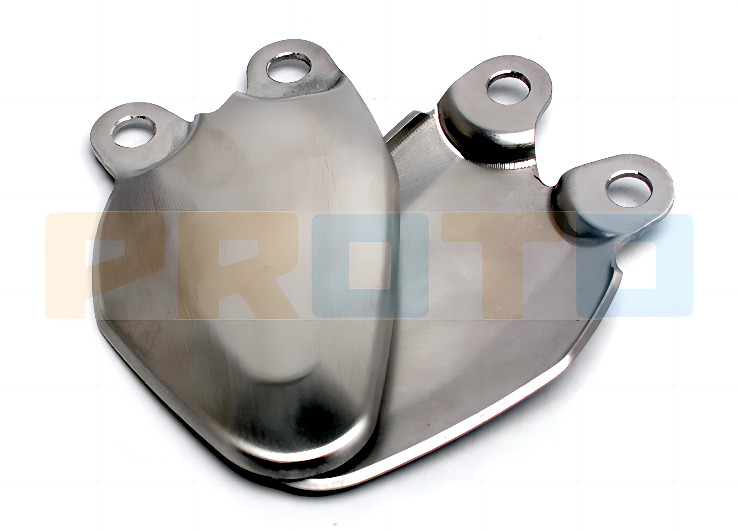Stainless steel is an excellent CNC machining material choice for making strong and durable items. Here are some reasons to choose stainless steel for your CNC machining project.

High tensile strength
Stainless steel has higher tensile strength than mild steel, brass and different types of aluminum alloys. Tensile strength refers to the tension required to stretch a material to its breaking point. This is especially important with the many bends and rolling parts that many products experience during their service life.
Low temperature resistance
Some stainless steel grades maintain their stability over a wide range of temperatures. For example, austenitic stainless steels perform well at subzero temperatures, with excellent toughness and improved tensile strength. However, it is worth noting that not all stainless steel grades have this property.
Corrosion resistance
Stainless steel has excellent corrosion resistance and can resist scale and rust. This corrosion resistance makes stainless steel ideal for a variety of indoor and outdoor applications, including extreme temperatures and pressures. The reason stainless steel has this property is that the metal contains chromium, which forms a thin barrier when in contact with oxygen.
Exterior
Stainless steel has a silvery white appearance that will not discolor or rust over time. Its appearance is due to the high content of chromium. Additionally, stainless steel has other properties besides strength. Due to its aesthetic appearance, CNC machined stainless steel parts have a clean, modern look.
The Challenge of Customizing Stainless Steel Machine Parts
Stainless steel alloys lie between titanium and aluminum in terms of hardness, workability, strength and temperature resistance, but involve some challenges. Here are some of the challenges involved in machining custom stainless steel parts.
Overheat
Unlike many other types of steel and metals, stainless steel is a material that conducts heat poorly. But machining with stainless steel causes it to heat up quickly, which can damage the stainless steel itself as well as the tools and CNC machines used in the machining process.
Surface treatment is difficult
Choosing the appropriate surface treatment for a stainless steel CNC machined part can be very difficult in determining its aesthetics and other properties such as corrosion resistance, electrical conductivity, impact resistance, and weldability, etc.
Skills requirement
Working with stainless steel requires technical skill and consideration. Because machining stainless steel is tricky, using the wrong cutting tool or speed can damage the material. This challenge makes processing stainless steel very time-consuming and slow.
Poor processability
Stainless steel is more difficult to process than other metals. Additionally, it hardens very quickly and is difficult to control, which results in poor machinability. Therefore, machining stainless steel requires specialized tools.
Quick Tips for CNC Machining Stainless Steel
CNC machining stainless steel presents some challenges, but there are ways to avoid these issues and ensure a smooth process. Here are some quick tips for CNC machining this metal.
Select special milling tools and drill bits
It’s best to use high-speed steel milling tools and drill bits made of molybdenum or tungsten. They can withstand the stresses of the process with less wear when cutting stainless steel. These tools can also improve surface finish. Avoid using tools that are prone to wear, as this may slow down processing and increase production costs.
Manage the heat generated
One of the reasons why stainless steel CNC machining fails is heat. Keeping cutting speeds low and using coolant to manage heat is the best option. Additionally, it is often recommended to stop processing when the material begins to overheat.
Using interpolation and chip breaking cycles
Using interpolation and chip breaking cycles to manage chip formation during cutting is one way to manage chip formation. Doing this will help eliminate long, spindly crumbs. Check your tools regularly as worn cutting tools will form more chips.
Protect workpieces from deformation
Many factors can cause workpiece deformation, including speed and feed rates, as well as the cutting tool. Using worn cutting tools increases tool deflection, causing parts to go out of tolerance and become deformed. This is why it is important to use recommended speeds and feed rates when machining stainless steel.
PROTO MFG provides a wide range of manufacturing capabilities and other value-added services for all of your prototyping and production needs. Visit our website to learn more or to request a free, no-obligation quote.